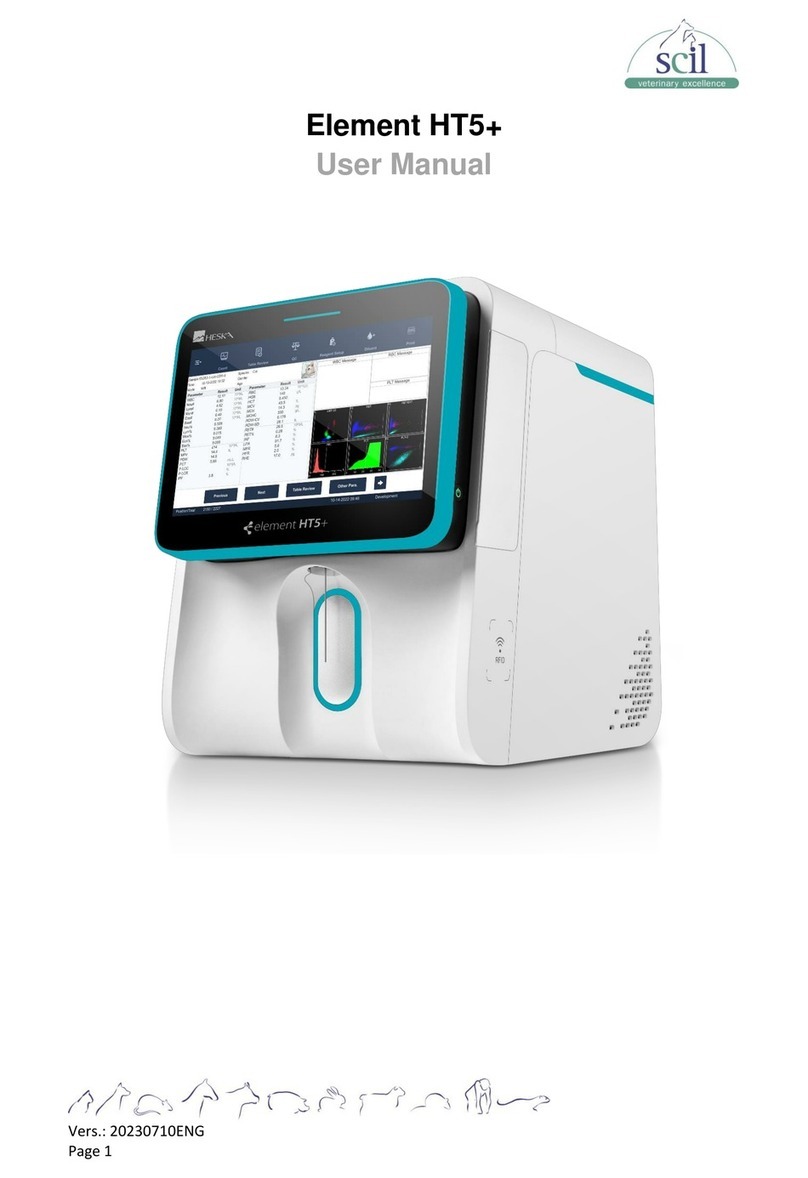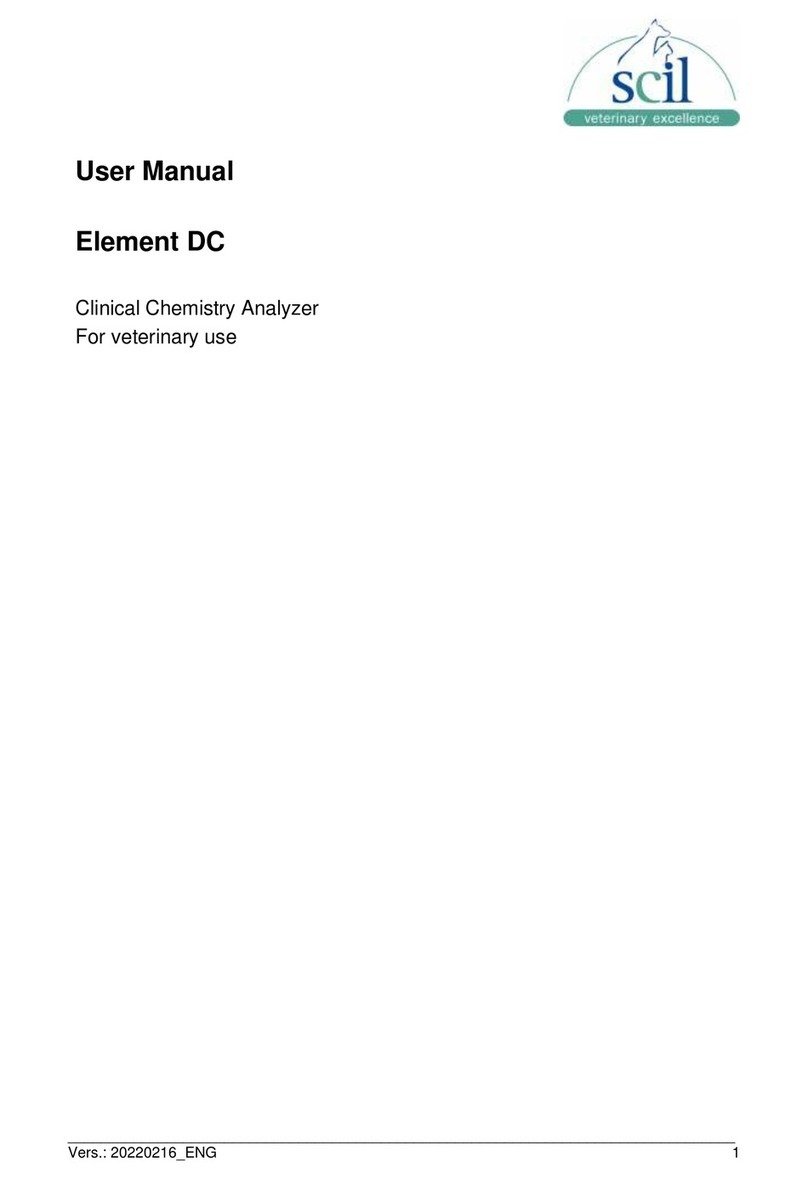__________________________________________________________________________
Vers. 20210510ENG Page 9
2.3 Detection Principle
element RC Analyzer is a bio-based analyzer with microcomputer. It is used in conjunction
with the available test rotors to detect the concentration of biochemical substances in the
patient sample, and utilizes the corresponding methods of end- point, rate, two-point method,
and the eight-segment wavelength synchronous detection.
element RC Analyzer uses the principle of absorption spectroscopy. The absorption
spectrum is mainly used for biochemical reaction tests, and its working principle is as follows:
Multiple sets of detection reagents are pre-loaded in the test rotor to form an independent
reaction chamber. The patient sample is added to the test rotor, and then the test rotor is
placed in the analyzer. The system is controlled by the computer processor, and the
biochemical substance in the blood enters the individual reaction chambers and chemically
reacts with the corresponding specific reagent to produce a color change. The absorption
spectrum is used to detect the change, and the calculation is performed by the analyzer
computer to determine the concentration of the biochemical substance present in the patient
blood sample. The turbidimetric method is mainly used for detection with immunochemical
tests, and the working principle is antigen/antibody complex. After binding, an immune
complex is formed, and the turbidity of the complex polymerization occurs within a pre-
defined time frame. When light passes through the solution, it can be absorbed by the
immune complex. The higher the immune complex, the more light is absorbed. The amount
of light absorbed is proportional to the amount of immune complex within a certain range.
The absorbance value is measured by the optical path component transmission, and the
content of the complex is proportional to the absorbance value. Similarly, when the amount
of the antibody is constant, the absorbance value is also proportional to the antigen content,
and the concentration and the content of the immune complex are analyzed to determine the
concentration of the immune complex.
2.4 Analyzer Structure and Components
The analyzer consists of the machine shell, core components, thermostatic temperature
control components, a two- dimensional bar code scanning acquisition component, printer
component, optical path component, LCD capacitive display+ touchpad, operating software
and a power cord.
The analyzer is compact, lightweight and easy to transport.
Analyzer components:
❖An outer plastic shells.
❖A variable speed motor that controls the rotation of the test rotor (machine core
components).
❖A photometer for testing the concentration of substances in a liquid (light path
components).





























